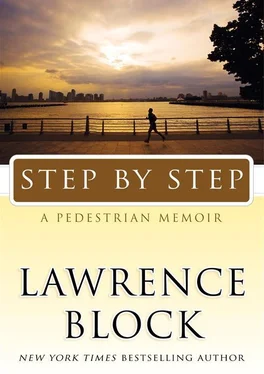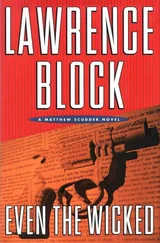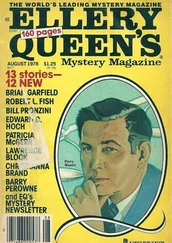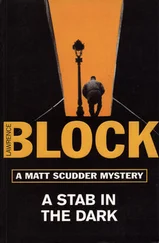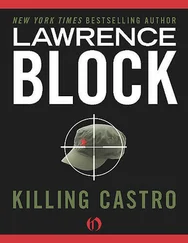Lawrence Block - Step by Step
Здесь есть возможность читать онлайн «Lawrence Block - Step by Step» весь текст электронной книги совершенно бесплатно (целиком полную версию без сокращений). В некоторых случаях можно слушать аудио, скачать через торрент в формате fb2 и присутствует краткое содержание. Год выпуска: 2009, ISBN: 2009, Издательство: William Morrow, Жанр: Биографии и Мемуары, Юмористические книги, на английском языке. Описание произведения, (предисловие) а так же отзывы посетителей доступны на портале библиотеки ЛибКат.
- Название:Step by Step
- Автор:
- Издательство:William Morrow
- Жанр:
- Год:2009
- ISBN:978-0-06-172181-6
- Рейтинг книги:3 / 5. Голосов: 1
-
Избранное:Добавить в избранное
- Отзывы:
-
Ваша оценка:
- 60
- 1
- 2
- 3
- 4
- 5
Step by Step: краткое содержание, описание и аннотация
Предлагаем к чтению аннотацию, описание, краткое содержание или предисловие (зависит от того, что написал сам автор книги «Step by Step»). Если вы не нашли необходимую информацию о книге — напишите в комментариях, мы постараемся отыскать её.
bestselling author comes a touching, insightful, and humorous memoir of an unlikely racewalker and world traveler.
Step by Step — читать онлайн бесплатно полную книгу (весь текст) целиком
Ниже представлен текст книги, разбитый по страницам. Система сохранения места последней прочитанной страницы, позволяет с удобством читать онлайн бесплатно книгу «Step by Step», без необходимости каждый раз заново искать на чём Вы остановились. Поставьте закладку, и сможете в любой момент перейти на страницу, на которой закончили чтение.
Интервал:
Закладка:
The course was a 2.42-mile loop around Lake Nokomis, most of it on asphalt paths through the park. There were a few brief cross-country sections, where they routed you from one path to another, and one significant cross-country stretch that had us going over a significant rise. Someone had posted a sign identifying the thing as Mount Nokomis, with a mock elevation chart that showed the decimal point migrating to the right, depending on which lap one was on. A walker would be hard put to maintain good form while scaling Mount Nokomis, but no one expected you to.
There were other elements of the course that kept it interesting, including a small wooden pedestrian bridge over a trickling creek and a much larger bridge that was part of an automobile route; we didn’t have to contend with traffic, there was plenty of sidewalk, but it was what the organizers referred to apologetically as “one unavoidable stretch of concrete.”
The local racewalkers’ club had pitched a support tent near the start/finish line, manned by Bruce Leasure, who would be doing the judging. Walkers were encouraged to use the tent, and one local walker, Dave Daubert, kept all his shoes there. He’d brought eight pairs along — all the same make and model, as far as I could tell — and he went through them systematically, changing his shoes every three hours. That struck me as genuinely strange, but I guess it didn’t hurt his performance any. When the race ended, Dave had gone the farthest.
Before the race got under way, I was already impressed with the way it was organized. They made you weigh in before the start, and got you back on the scales every four hours; if you lost more than a certain percentage of your body weight, they gave you a chance to eat and drink your way back to normal; if you couldn’t manage that, they could pull you out of the race.
I wondered if this was one more goddam thing to worry about, and then I remembered the words of the ultrarunner who’d volunteered in the food tent at Houston, the one where I’d spent far too much time. He’d announced that he’d never been in an ultra without weighing more at the end of the race than he had at the start.
Fans had a food tent, of course, and a medical tent as well, where volunteers were on hand to provide first aid for blisters and, remarkably, massages. The whole enterprise was well thought out and efficiently organized, and that was a plus, but then they blew the whistle or sounded the horn or fired the gun, whatever the hell they did, and from then on we had to get out there and roll up the miles.
Typically, laps are run counterclockwise. That’s how milers do it on an oval track, or horses at the Churchill Downs. But circumstances alter cases. At Corn Belt they switch every four hours. At Wakefield laps are clockwise, to make that steep fifty-yard cross-country patch downhill; that way it’s no worse than a nuisance.
At FANS, the start is clockwise. Then, after we’d gone perhaps just over four-fifths of a mile or just past Mount Nokomis, they turned us around, had us scale Mount Nokomis a second time, and sent us back to the starting line. We crossed it and kept on going, and the rest of our race was counterclockwise.
(Incidentally, I wonder how long that phrase will remain in use, or even comprehensible. When all the world’s clocks are digital, how will we describe our progress around a track? I may have pondered this question while I circled Lake Nokomis. I had plenty of time for idle thought, and nothing all that important to think about.)
The point of the out-and-back was not to provide us with an extra turn on that hill, but to make a couple of key points in the race coincide with the start/finish line. So we would hit the fifty-mile mark at the completion of the twentieth lap, and five more laps would bring us to a hundred kilometers. (The hundred-mile mark would come a half mile before the end of the forty-first lap.)
The start was at 8:00 a.m., and as this was June the sun was already giving a good account of itself. There was a good amount of cloud cover, though, and this increased until the sky was largely overcast by noon. It looked as though we’d be spared the full heat of a June day, which was a relief, but the trade-off was a strong possibility of rain before the day was over.
It’s always something.
Meanwhile, though, I was doing fine. It was a pleasure to be in a race that was long enough to keep me from worrying about time. I found it maddening that I had to stop to pee as often as I did in the early miles of a marathon; here there was a john set up a little more than halfway around the loop course, and I didn’t resent my stops there. In fact, I made it a part of my routine to duck in every other lap, welcoming the brief break.
After the February 2006 race in Houston, Andy Cable had posted an interesting observation on the ultrawalking message board. He’d stopped when he reached one hundred kilometers, although he was sure he’d been capable of quite a few more miles. What took him out of the race, he decided, was that he’d set himself too few goals. His first goal, which he’d achieved, had been to go 100K and take home an Ulli Kamm award. His second goal was to circle that loop fifty times and qualify as a Centurion.
Fifteen hours into the race, it became inescapably evident to him that a hundred miles was out of reach that day. And so, once he’d walked his hundred kilometers, he had no real reason to keep going. It was late, he was tired, his feet were soaked, so why not go back to his hotel and get some sleep?
If he’d had some intermediate goals — seventy miles, eighty miles — he might have stayed on the course a couple of hours longer.
I’d read his post and took it to heart, and set my own goals accordingly. At a minimum, I wanted to win another Ulli Kamm award. After that, I wanted to extend my personal record beyond the 66.3 miles I’d managed last year at Wakefield. I’d been less than a lap short of walking my age in that second Wakefield race, and would probably have done so if I’d been thinking in those terms, so I added that this time around. I was still sixty-eight, with my birthday a couple of weeks away, so I’d be aiming at that many miles.
After that, 70 miles was a goal. Then 75. Then 78.6 — a triple marathon. And then, God willing an’ the creek don’t rise, eighty.
That didn’t mean I’d necessarily slam on the brakes at the eighty-mile mark. Anything beyond that number would be just fine. But eighty seemed like a good dream goal, not entirely unrealistic, not if everything went right, but — well, I won’t say it wasn’t going to be a walk in the park, because that’s precisely what it was going to be. But it would be a very long walk in the park.
I had another goal, a goal of another sort. There was no number attached to it, and it didn’t have anything directly to do with distance.
I wanted to keep going for the full twenty-four hours. The secret to distance, it seemed to me, lay in staying on the course. Four miles an hour was the slowest setting I ever chose on the treadmill, and four times twenty-four is ninety-six; that easy pace would carry a walker to the very brink of Centurion status.
Which is not to say that I could become a Centurion by walking fifteen-minute miles. Everyone slows down in the second half of that long a race. But suppose you walked at that pace for the first twelve hours and slowed to a stroll of three miles an hour for the remaining time. You’d wind up covering eighty-four miles. Why, if you simply averaged three miles an hour, poking along at twenty minutes a mile, you’d go seventy-two miles in twenty-four hours — and that was better than I’d managed in my three previous attempts at the distance.
That was the answer, I told myself. Perseverance. Stay on the course, keep putting one foot in front of the other. No naps, because you won’t really need one. Just pretend you’re back in college, pulling an all-nighter, wired on pharmaceuticals and bad coffee, trying to knock off a term’s worth of studying before the sun comes up...
Читать дальшеИнтервал:
Закладка:
Похожие книги на «Step by Step»
Представляем Вашему вниманию похожие книги на «Step by Step» списком для выбора. Мы отобрали схожую по названию и смыслу литературу в надежде предоставить читателям больше вариантов отыскать новые, интересные, ещё непрочитанные произведения.
Обсуждение, отзывы о книге «Step by Step» и просто собственные мнения читателей. Оставьте ваши комментарии, напишите, что Вы думаете о произведении, его смысле или главных героях. Укажите что конкретно понравилось, а что нет, и почему Вы так считаете.
